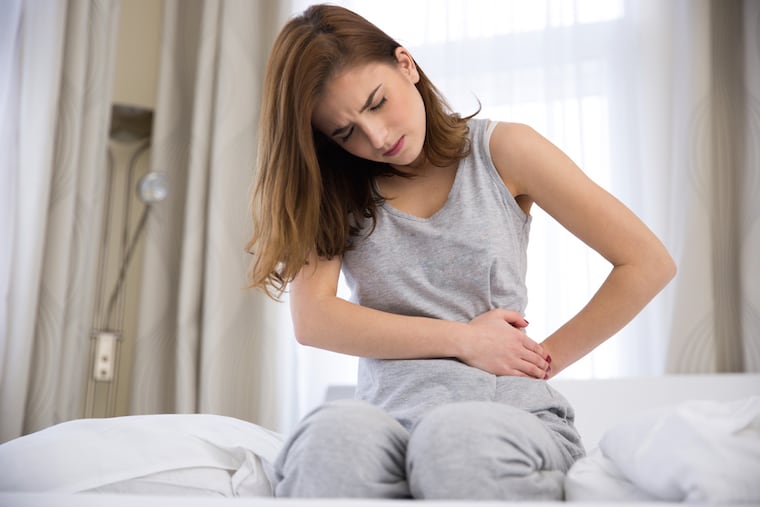Q&A: How to treat painful menstrual cramps
Dysmenorrhea is the medical term used to describe painful menstrual cycles, with pain occurring either before the menstrual cycle or while bleeding.

Q: What causes painful menstrual cramps and what is the best treatment?
A: Dysmenorrhea is the medical term used to describe painful menstrual cycles, with pain occurring either before the menstrual cycle or while bleeding. It is the most common gynecologic complaint and a leading cause of missing school or work among female adolescents and young adults. There are two types of dysmenorrhea: primary and secondary.
Primary dysmenorrhea, the most common type among adolescents, is pain associated with the menstrual cycle, such as cramps. Chemicals called prostaglandins are made in the lining of the uterus and cause the cramping pain. Prostaglandins increase in the lining of the uterus right before the menstrual cycle begins and on the first day of the menstrual cycle these levels are elevated. This is why cramping in the lower abdomen can start one to two days before the onset of the menstrual cycle and last for 24 to 48 hours. Levels of prostaglandins decrease each day of the menstrual cycle as the lining of the uterus is shed.
Secondary dysmenorrhea is when the cramps are related to a medical problem. The pain often lasts longer than normal menstrual cramps, may worsen during the course of a menstrual cycle, and continues after a cycle goes away. A common cause of secondary dysmenorrhea is endometriosis. Other causes could include reproductive tract anomalies, ovarian cysts, pelvic inflammatory disease or adhesions.
While lower abdominal cramps are the most common symptom associated with dysmenorrhea, adolescents can suffer other symptoms, as well, including headaches, nausea, vomiting, backaches, flushing, weakness, and diarrhea, all of which can range from mild to severe. Nonsteroidal anti-inflammatory (NSAID) drugs (i.e., ibuprofen) block the effects of prostaglandins, therefore reducing menstrual cramps. They are a helpful treatment option. NSAIDs provide the most benefit if taken at the first sign of menstrual pain. Using a heating pad and exercising can also help with cramping.
If menstrual pain is not controlled with a heating pad or NSAIDs, or an adolescent is repeatedly missing school and/or other activities, she should visit her doctor. It is helpful to share with the doctor how often menstrual cycles occur, when the pain begins, what symptoms are experienced during the menstrual cycle, and what has been tried to provide relief. A medical professional can offer alternative options for how over-the-counter medication should be taken or whether hormonal contraception can be used to treat dysmenorrhea. Many adolescents use birth control to manage their menstrual cramps even though they are not sexually active. Hormonal contraceptives include pill, patch, vaginal ring, injection, implant or intrauterine device.
Rachael L. Polis is a pediatric and adolescent gynecologist at Crozer-Keystone Health System. She sees patients from newborn to 25 years old in Crozer-Keystone OB/GYN offices in Broomall, Media and Upland.